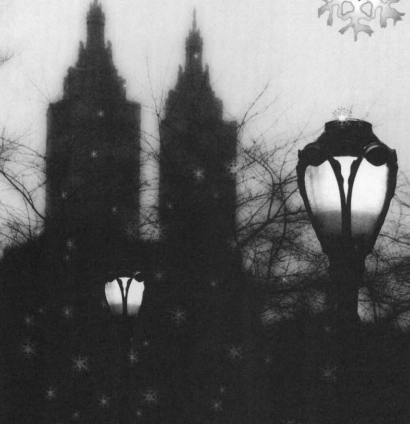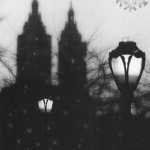
Blog
Topic Pages: Christian Holidays
December 3, 2020
2013: Robert Rees, “Easter,” Dialogue 46.2 (Summer 2013): 92 – 93.
A poem about a grandfather watching his grandson experience Easter.
2013: Michael Hicks, “Singing in the Easter Choir beside My Enemy,” Dialogue 46.2 (Summer 2013): 103.
A poem about a man singing next to his enemy.
2013: Boyd Petersen, “Rethinking the LDS Aversion to the Cross,” Dialogue 46.2 (Summer 2013): 157 – 163.
A review of a book about why Mormons banished the cross from the theology and iconography.
2012: Andrew Ashcroft, “The Great Vigil of Easter,” Dialogue 45.1 (Spring 2012): 149 – 152.
“Christ is arisen as he promised. Death no longer has dominion. He is present to us always and makes of our world an endless, material delight. He fills our mouths with laughter and fills the hungry with His own flesh and blood. Alleluia, alleluia.”
2011: Harlow Soderberg Clark, “Easter Sermons,” Dialogue 44.2 (Summer 2011): 150 – 151.
A poem about ranching sheep that follows Easter in it’s theme.
2008: Larry T. Menlove, “Who Brought Forth This Christmas Demon,” Dialogue 41.3 (Fall 2006): 143 – 156.
In “Who Brought Forth this Christmas Demon” Larry T. Menlove brings us a beautifully complicated story of two men trying to find their way in life with the backdrop of a Christmas tree lot in Payson, Utah. Also see Out Loud podcast reading here.
2004: Robert Rees, “Why Mormons Should Celebrate Holy Week,” Dialogue 37.3 (Fall 2004): 151 – 167.
Rees gives multiple reasons why Mormons can find similiar theology and reasons to celebrate the Holy Week the same way other Christians do.
2004: Matthew Bolton, “Postscript from Iraq: A Flicker of Hope in Conflict’s Moral Twilight,” Dialogue 37.1 (Spring 2004): 180 – 185.
“Although it is traditional to read the whole of Luke’s Christmas narrative during the advent season, we often seem to forget the context Luke gives. This baby boy, Jesus, was born in the context of a brutally repressive regime—and at the bottom of its pile.”
2004: Dawn Baker Brimley, “Christmas Conflict 2001,” Dialogue 37.2 (Summer 2004): 200 – 201.
Poem about Middle East violence.
2001: Keith Norman, “Taking Up the Cross,” Dialogue 34.4 (Fall/Winter 2001): 188 – 192.
“The crucifixion is considered by many to be the most profound and significant event in the history of the world—when God voluntarily descended to the lowest possible state to endure humiliation, excruciating pain, and shameful death to save mankind from sin and eternal death. Thus the cross, which has become the symbol of God’s love and self-sacrifice, adorns most Christian churches and is worn around the necks of many Christians as an emblem of faith and thanksgiving.”
2002: Danielle Beazer Dubrasky, “Christmas Card from Siple Station, Antarctica,” Dialogue 35.4 (Winter 2002): 86.
Poetry with Christmas theme.
1999: N. Andrew Spackman, “The First Christmas Eve at Home,” Dialogue 22.4 (Summer 1999): 170.
Poetry with Christmas theme.
1997: David Seiter, “Passing On, Holiday,” Dialogue 30.1 (Spring 1997): 146.
Poetry with Christmas theme.
1995: David Seiter, “The Angel Tree,” Dialogue 28.3 (Fall 1995): 93 – 96.
The request to work a second year in the Salvation Army’s annual “Angel Tree” booth, a thoughtful community Christmas project enjoyed by church members, came during a thunderous downpour one Monday morning in December
1991: Steve Siporin, “A Jew Among Mormons,” Dialogue 24.4 (Winter 1991): 115 – 122.
Nor had we ever before received greeting cards on our (Jewish) holidays from non-Jewish friends and neighbors.
1989: Aldyth Morris, “Christmas Morning — 1906,” Dialogue 22.4 (Winter 1989): 112 – 114.
By now the Christmases of my life— all but one — have escaped restrictions of time and place and have arranged themselves, undated, in an intricate mosaic of memories, which can be instantly evoked by such small things as a scrap of tinsel or the smell of pine trees.
1986: Leslie Norris, “Christmas in Utah,” Dialogue 19.4 (Winter 1986): 87.
Poetry with Christmas theme.
1986: Helen Candlands Stark, “Christmas Sonnets from Other Years” Dialogue 19.4 (Winter 1986): 18 – 19.
Poetry with Christmas theme.
1974: Linda Sillitoe, “Waiting for Lightning,” Dialogue 9.3 (Autumn 1974): 57.
Poetry with Christmas theme.
1972: Samuel W. Taylor, “The Second Coming of Santa Claus: Christmas in a Polygamous Family,” Dialogue 7.3 (Autumn 1972): 7 – 10.
Four of my father’s wives lived at Provo during my childhood, a situation particularly fortunate for the swarm of Taylor kids. Santa Claus came twice to us, instead of just the single time he visited homes of those unfortunates whose fathers had only one wife. We were taught how blessed we were, to be among the very last to be privileged to live the fullness of”the gospel; and here was a tangible evidence
1972: Wayne Carver, “A Child’s Christmas in Utah,” Dialogue 7.3 (Autumn 1972): 13 – 17.
The afternoon of the banquet, in that unsettling lull between stacks of themes, I wrote “A Child’s Christmas in Utah.” I have tinkered with it since, but not much. Not enough, perhaps.
1972: Michael Moody, “Three Christmas Hymns: A Christmas Hymn ; The Babe of Bethlehem ; Away in a Manger,” Dialogue 7.3 (Autumn 1972): 39.
Music with a Christmas theme.


 Back to all blog articles
Back to all blog articles

